The Most Difficult Breed of Dog to Own: Characteristics and Challenges
When it comes to dog ownership, some breeds are notoriously challenging. If you’re considering welcoming a four-legged friend into your home, it’s crucial to know what to expect. Certain dog breeds demand more time, effort, and understanding than others. In this article, we will explore the characteristics and challenges of some of the most difficult dog breeds to own, helping you make an informed decision.
Understanding the Challenges
Each breed has its unique personality and needs. When referring to difficult dog breeds, a few key traits often come up:
- High Energy Levels: Some breeds require more exercise and mental stimulation than others.
- Intense Temperament: Breeds with strong-willed natures may need experienced owners.
- Health Concerns: Certain breeds are prone to specific health issues.
- Grooming Needs: Some dogs require regular grooming, which can be time-consuming and costly.
Features of Difficult Dog Breeds
To provide a clearer picture, let’s look at some specific breeds known for being particularly challenging:
| Breed | Key Characteristics | Challenges |
|---|---|---|
| Border Collie | Intelligent, high-energy | Needs constant mental stimulation to prevent destructive behavior. |
| Jack Russell Terrier | Vocal, keen hunting instincts | Can be aggressive with small pets and requires firm training. |
| Rottweiler | Confident, protective | Requires early socialization and consistent training to behave properly. |
| Chow Chow | Independent, aloof | Can be difficult to train and may be aggressive toward strangers. |
| Malinois | Highly energetic, loyal | Needs a job to do; otherwise, it can become restless and frustrated. |
Why Certain Breeds Are Considered Difficult
Understanding why specific breeds fall into the “difficult” category helps prospective dog owners prepare better. Consider the following factors:
- Training Requirements: Many challenging breeds need advanced training techniques and socialization from a young age. If you are a first-time dog owner, you might find it more difficult to handle.
- Exercise Demands: Breeds like the Border Collie require hours of physical activity daily. If you live a busy lifestyle, this could be a tough match.
- Personality Traits: Some breeds are naturally more aloof or aggressive. These traits can create challenges in social settings or around other dogs.
The Commitment to Ownership
Owning a challenging breed is more than a passing decision; it’s a long-term commitment. Here are some considerations to take into account before bringing a dog home:
- Time: Devote time daily for walks, training, and bonding activities.
- Financial Resources: Ensure you can afford grooming, vet bills, and food.
- Patience and Persistence: Be prepared for occasional setbacks during training and socialization.
If you’re ready to embrace the challenges that come with these breeds, the rewards can be immense. Loyal companions, active lifestyles, and the joy of mastering training can all come from the experience.
Before making a decision, it may be beneficial to visit resources about specific breeds. Websites such as AKC and I Buy Pets offer valuable insights into various traits and needs. Consider reaching out to local trainers or shelters for further assistance in determining the right fit for your lifestyle.
Remember, owning a dog, especially a more challenging breed, can be an incredibly fulfilling journey if you are prepared for the responsibility. Choose wisely and commit fully, and you will experience the joy unique to these wonderful companions.
Understanding the Needs of High-Maintenance Dog Breeds
When considering a new canine companion, understanding the needs of high-maintenance dog breeds is critical. These breeds often require extra attention, training, and care. It’s essential to identify what makes these dogs unique and how potential owners can meet their needs effectively.
What Are High-Maintenance Dog Breeds?
High-maintenance dog breeds are those that often require more time, effort, and investment in terms of grooming, exercise, training, and medical care. Some popular high-maintenance breeds include:
- Afghan Hound
- Bulldog
- Poodle
- German Shepherd
- Border Collie
Owning any of these breeds means being prepared for the commitment and responsibilities associated with their care. Each breed comes with its specific set of needs, and understanding these is key to ensuring a happy and healthy dog-owner relationship.
Grooming Needs
One of the most noticeable needs in high-maintenance dog breeds is grooming. Many of these breeds have long or thick coats that require frequent brushing and professional grooming. For instance:
| Breed | Grooming Frequency | Special Considerations |
|---|---|---|
| Afghan Hound | Every 2-3 days | Requires detangling and specific hairstyles |
| Poodle | Every 4-6 weeks | Needs clipping and regular ear cleaning |
| Bulldog | Weekly | Focus on skin folds and wrinkle maintenance |
It’s important to set aside time for regular grooming sessions. Not only does this help maintain the dog’s appearance, but it also encourages bonding between the dog and owner.
Exercise Requirements
High-maintenance dogs are often very active. They can become bored and destructive if they don’t receive enough physical and mental stimulation. For example, breeds like the Border Collie thrive on daily exercise that challenges them. Here are some tips to ensure they get the exercise they need:
- Schedule daily walks or runs.
- Incorporate interactive play, like fetch or agility training.
- Provide toys that stimulate their minds, such as puzzle toys.
Understanding your breed’s exercise needs is crucial. If not met, these dogs may exhibit behavioral issues like excessive barking or chewing furniture.
Training Challenges
Many high-maintenance breeds are known for their intelligence, which can ironically complicate training. They can become easily bored if training sessions are repetitive. Thus, varying training methods and keeping sessions short can be beneficial. Here are some strategies:
- Use positive reinforcement to encourage good behavior.
- Incorporate fun tricks along with basic commands.
- Socialize them with other dogs and new environments to enhance adaptability.
Building a strong foundation in training is especially important for breeds such as the German Shepherd, which thrive when given a clear structure and purposeful tasks.
Nutritional Needs
Each breed may also have specific dietary requirements that contribute to their maintenance level. Dogs with high energy levels, like a Border Collie or German Shepherd, may require a specialized diet tailored for active dogs. Here are a few key points to consider:
- Consult with a veterinarian to create a balanced diet plan.
- Choose high-quality dog food that meets their specific energy needs.
- Monitor their weight to prevent obesity, which can lead to health issues.
You can find more on proper nutrition for high-maintenance breeds at The American Kennel Club.
Health Care Considerations
High-maintenance breeds tend to have unique health care needs. They might be susceptible to breed-specific conditions. Thus, regular check-ups are crucial. Some examples include:
- Bulldogs may require skin fold care to avoid infections.
- Poodles can be prone to ear infections due to their hair.
Staying informed and proactive about your dog’s health can enhance their quality of life significantly.
Understanding the needs of high-maintenance dog breeds can prepare potential owners for the joys and challenges of pet ownership. With the right commitment and resources, these breeds can bring immense happiness and companionship into your life.
For more comprehensive information on dog care, consider visiting PetMD or ASPCA.
Common Misconceptions About Difficult Dog Breeds
When it comes to dog ownership, many people form opinions based on myths or hearsay rather than facts. This is especially true for breeds often labeled as “difficult” to own. Understanding the truths behind these misconceptions can help potential dog owners make informed choices that align with their lifestyle.
One common myth is that only certain breeds are difficult to train. While it’s true that some breeds, like the Border Collie or the German Shepherd, might require more mental stimulation and consistent training, any dog can be trained effectively with the right approach. Factors such as the dog’s age, environment, and the owner’s experience all play essential roles in the training process. So, while some breeds might be perceived as more challenging, with commitment, patience, and proper techniques, they can flourish.
Another misconception is that certain breeds are just too aggressive or difficult to handle. Breeds like the Rottweiler or the Pit Bull Terrier often fall victim to this stereotype. However, aggression often stems from factors such as fear, lack of socialization, or insufficient training rather than intrinsic breed characteristics. It’s vital for prospective dog owners to focus on the individual dog’s background and behavior rather than the breed label alone.
People frequently believe that dog breeds labeled as “difficult” require excessive amounts of exercise, making them unsuitable for busy families. While many high-energy breeds do need regular physical activity, not every member of these breeds will require the same intensity or duration of exercise. For example, a Airedale Terrier may require daily walks, but this can be achieved with shorter, more frequent walks or playtime in the yard. Understanding your lifestyle and your dog’s specific needs is key to successful ownership.
Some individuals also hold the belief that certain breeds simply aren’t compatible with kids or other pets. Breeds like the Bull Terrier and Dalmatian may be portrayed as unsuitable for families, but each dog’s temperament varies widely depending on socialization and training. Implementing good practices from an early age can create a harmonious environment. Moreover, it is essential to introduce dogs to children and other pets gradually and positively.
Here’s a brief overview of various difficult breeds and the misconceptions surrounding them:
| Breed | Common Misconception | Reality |
|---|---|---|
| Rottweiler | Too aggressive | Can be gentle and loving with training |
| Pit Bull | Inherently dangerous | Individual behavior varies; training is key |
| Bully breeds | Not good with kids | With proper socialization, can be friendly |
| Border Collie | Difficult due to exercise needs | Can adapt to family exercises |
Another widespread idea is that difficult breeds are too stubborn to learn commands. While some dogs have a more independent streak, it’s essential to recognize that training styles significantly impact behavior. Positive reinforcement methods, for instance, can work wonders for stubborn breeds. These techniques can yield lasting results and even deepen the bond between dog and owner.
Ultimately, the most important factor in dog ownership is understanding the breed and the individual dog’s personality. Researching breeds, considering their needs, and reflecting on your own lifestyle can help you determine if you’re ready to welcome a challenging breed into your home. Resources like the American Kennel Club can be invaluable for learning about breed-specific traits and care tips.
By debunking common misconceptions about difficult dog breeds, you’re not only empowering yourself to make better decisions but also ensuring a healthier and happier relationship with your future pet.
Training Tips for Complex Dog Personalities
Training a dog can be an enjoyable experience, but it can also present challenges, especially with complex dog personalities. Understanding your dog’s unique traits is key to effective training. Here are some tailored tips to help you navigate the multifaceted world of dog training.
Identify Your Dog’s Personality Type
Before diving into training, take a moment to assess your dog’s personality. Understanding whether your dog is dominant, anxious, or a mix of various traits can shape your approach. Here are common personality types:
- Dominant Dogs: These dogs are often confident and may try to assert themselves. They require a firm but fair training approach.
- Anxious Dogs: If your dog tends to be fearful or nervous, a gentle approach with positive reinforcement works best.
- High-Energy Dogs: Some breeds need more physical activity. They often require training sessions that incorporate exercise.
Utilize Positive Reinforcement
For dogs with complex personalities, positive reinforcement is one of the most effective training techniques. Rewarding good behavior with treats, praise, or playtime encourages your dog to repeat those actions. To implement this:
- Choose small, tasty treats that your dog loves.
- Offer praise immediately after your dog performs the desired behavior.
- Gradually increase the difficulty of the commands as your dog learns.
Establish Consistency
Consistency in your commands and rules is essential. If one family member allows the dog on the furniture while another does not, it can confuse your pet. Set firm rules and ensure everyone in the household follows them. Here are some tips to ensure consistency:
- Use the same words for commands each time.
- Stick to a regular schedule for feeding and walks.
- Be patient; complex personalities might take longer to adapt.
Engage in Interactive Play
Interactive play is crucial, especially for high-energy dogs or those with anxious tendencies. Engaging your pet in games that stimulate both their mind and body can aid in training. Consider using:
| Game | Description |
|---|---|
| Tug-of-War | A great way to release energy and teach control. |
| Hide and Seek | Strengthens the bond while teaching recall commands. |
| Obstacle Courses | Encourages focus and is great for working with anxious dogs. |
Socialization is Key
Socializing your dog helps them become well-rounded individuals. This is particularly important for anxious or dominant personalities. Here’s how to facilitate effective socialization:
- Expose your dog to various environments, people, and other animals.
- Attend dog training classes or social events.
- Always supervise interactions, ensuring they are positive experiences.
Be Attuned to Emotional Changes
Dogs with complex personalities can have emotional fluctuations. Pay attention to your dog’s cues. If they seem more anxious or aggressive, it might be time to re-evaluate your training methods or consult a professional trainer. Here’s how to monitor their emotions:
- Observe body language, such as tail position and ear movement.
- Note changes in behavior, such as withdrawal or excessive barking.
- Keep track of specific situations that trigger negative responses.
Finding effective training strategies for dogs with complex personalities can be a learning curve. However, by employing patience, understanding, and the above strategies, you can foster a better relationship with your dog. For more tips and professional advice, check out resources like American Kennel Club or Certification Council for Professional Dog Trainers.
Remember, every dog is unique, and what works for one may not work for another. Tailoring your approach based on your dog’s specific needs is key to successful training.
The Impact of Breed on Owner Commitment and Lifestyle
When you consider bringing a dog into your home, the breed you choose plays a significant role in shaping your lifestyle and level of commitment. Different breeds come with varying needs and temperaments, making it essential to select one that aligns with your life situation. Understanding these differences can help you make informed decisions that benefit both you and your furry friend.
Each dog breed has unique characteristics which directly affect the owner’s commitment level. For instance, high-energy breeds like Border Collies or Siberian Huskies require extensive exercise and mental stimulation. This commitment demands more time and effort from their owners, often restricting other lifestyle choices. If you’re an active person who loves long hikes or runs, these breeds could be an excellent fit for you. However, if you’re more of a couch potato, this commitment might become overwhelming.
On the other end, some breeds are more laid-back and adapt well to a quieter lifestyle. Breeds such as Bulldogs or Shih Tzus may be more suitable if you prefer a more relaxed environment. They typically require less exercise compared to their high-energy counterparts and may be fine with brief daily walks. Choosing a dog breed that aligns with your pace of life can significantly ease the challenges of pet ownership.
Another important factor is grooming needs. Breeds like Poodles and Afghan Hounds need regular grooming sessions, which can be time-consuming and costly. These dogs often have specific coat types that require maintenance to keep them healthy and looking great. If you’re not prepared for this level of commitment, you may want to consider breeds with short or low-maintenance coats, such as Beagles or Boxers.
| Breed | Exercise Requirements | Grooming Needs | Temperament |
|---|---|---|---|
| Border Collie | High | Medium | Intelligent, Energetic |
| Bulldog | Low | Low | Friendly, Docile |
| Poodle | Medium | High | Intelligent, Alert |
| Boxer | Medium | Low | Fun-loving, Loyal |
The environment you provide is also an essential consideration. Large breeds, such as Great Danes or German Shepherds, generally do better in spacious settings where they have room to roam. On the contrary, smaller breeds can thrive in apartments or tighter living conditions. Ensure you consider not only your living space but also nearby facilities, such as parks, which will help facilitate your dog’s exercise routine.
Additionally, consider the time commitment related to training. Certain breeds require more structured training compared to others. For example, a German Shepherd is a highly trainable and intelligent breed that thrives on obedience tasks but requires consistent training and socialization. Conversely, some breeds may be less eager to please and can be stubborn, making training more challenging. If you have little experience with dog training, it may be wise to choose a breed known for its willingness to learn.
Social behaviors also vary greatly among breeds. Dogs like Golden Retrievers are known for their friendly and sociable nature, often making them great companions for families. Meanwhile, breeds like Chihuahuas could be more territorial or anxious around strangers. The breed’s innate temperament can affect not only how you interact with your dog but also how your dog interacts with others, including family and guests.
Choosing a dog breed that aligns with your lifestyle can profoundly impact your commitment and experiences as a pet owner. Always consider factors like energy levels, grooming needs, space, training, and socialization when deciding. Research makes a difference; consulting reliable resources such as the American Kennel Club or PetMD can provide in-depth insights into various breeds. A well-thought-out decision takes you one step closer to having a happy and healthy companionship with your chosen pup.
Essential Resources for Potential Dog Owners of Challenging Breeds
Owning a dog can be one of the most rewarding experiences in life. However, if you’re considering a breed that is often termed “challenging,” preparation and understanding are vital for a successful ownership experience. Certain dog breeds, such as the Belgian Malinois, Akita, and Siberian Husky, can require extra attention, training, and resources. Below are essential resources that can help potential dog owners navigate the challenges associated with these breeds.
Understanding Breed Characteristics
Having in-depth knowledge about the specific breed you want is crucial. Each breed has its unique set of traits that can impact your lifestyle. Here’s what to consider:
- Temperament: Understanding the personality traits of a breed will help you prepare for its behavior. For example, many large working breeds need a job or task to keep them mentally stimulated.
- Exercise Needs: High-energy dogs, like the Border Collie or Belgian Malinois, need significant exercise. Research the daily activity requirements to ensure you can meet them.
- Grooming Requirements: Some breeds have special grooming needs or shed more. Planning for grooming can help you budget your time and finances.
Training and Socialization Resources
Training is essential, especially for challenging breeds. Here are some resources to keep in mind:
- American Kennel Club – A wealth of information about training and events related to various breeds.
- Dog Training Nation – Provides tips, techniques, and advice from professional trainers.
- International Association of Animal Behavior Consultants – Offers guidance on behavioral issues specific to challenging breeds.
Veterinary Support and Health Resources
Owning a challenging breed might mean that you will need extra veterinary support due to possible breed-specific health issues. Make sure to:
- Look for veterinarians who specialize in the breed or have experience with similar breeds.
- Consider pet insurance options to help manage potential medical costs related to breed-specific health conditions.
Here are some useful links to find veterinarians and pet insurance:
- American Veterinary Medical Association – Find accredited veterinarians near you.
- Pet Insurance Review – Compare different pet insurance companies for coverage options.
Community and Support Groups
Connecting with other dog owners who have similar breeds can provide invaluable support. Look for:
- Meetup Groups – Search for local dog meetups to socialize your dog and learn from experienced owners.
- Reddit’s Dog Community – A place to ask questions and share your experiences with other dog enthusiasts.
Essential Supplies
A challenging breed often needs specialized supplies to thrive. Here are some must-haves:
- ID Tags: Always have a collar with an ID tag containing your contact information.
- Proper Training Tools: Invest in training aids like clickers, leashes, and training books that cater to your dog’s needs.
- Durable Toys: Choose toys that withstand vigorous play, especially for strong breeds.
Emergency Preparedness
Being prepared for emergencies is essential for any dog owner. Ensure you have:
- A first-aid kit specifically for pets, which includes supplies for common injuries.
- A solid understanding of basic first-aid procedures for dogs.
- The contact information for an emergency veterinary clinic nearby.
In acquiring a challenging breed, deciphering their needs can lead to a fulfilling life together. By using these resources, you can ensure that you are well-equipped for the responsibilities ahead. Remember that preparation and continuous learning are key components of successful dog ownership.
Personal Stories: Triumphs and Trials of Owning Difficult Dog Breeds
When it comes to owning a dog, you might imagine long walks, wagging tails, and cuddly moments. However, some breeds come with unique challenges that can make pet ownership a real test of patience, skill, and love. Let’s explore the triumphs and trials of owning difficult dog breeds through personal stories from real pet owners.
Understanding Difficult Breeds
Difficult dog breeds often include those that are high-energy, stubborn, or possess challenging behavioral traits. Some examples are:
- Rottweiler
- Belgian Malinois
- Border Collie
- Shiba Inu
- Chow Chow
These breeds may require extensive training, considerable exercise, and socialization. Owners often share their experiences of hard-earned victories after overcoming the struggles associated with keeping these special dogs.
The Trials of Ownership
Rachael, a proud owner of an energetic Border Collie named Max, recalls her early days: “Max was a handful from day one. Instead of just fetching the ball, he’d sprint away with it, refusing to bring it back. I quickly realized that training him would be a full-time job!”
Many owners, like Rachael, quickly come to understand that certain breeds need more than just basic obedience training. Consistency, patience, and engaging activities are necessary to keep these dogs happy and well-behaved.
Real Triumphs
As challenging as it can be, there are incredible triumphs that come with the experience of owning a difficult breed. Experts agree that the bond formed between dog and owner can be exceptionally strong in these cases.
Take Tom, for instance, who adopted a stubborn Rottweiler named Duke. Initially, Duke would pull on the leash and bark excessively during walks. After attending an obedience class together, Tom shares, “Duke transformed right before my eyes. He became more focused, and I could finally enjoy our walks together.”
This success story is echoed by many owners. The journey might be filled with bumps, but as you persevere, the rewards can be immensely satisfying.
Managing Behavioral Challenges
Owning a difficult breed often requires strategies to manage their behavioral issues. Here are some effective approaches that pet owners have found helpful:
| Behavioral Challenge | Recommended Strategy |
|---|---|
| Excessive Barking | Positive Reinforcement for Quiet Behavior |
| Pulling on the Leash | Loose-Leash Training Techniques |
| Separation Anxiety | Gradual Desensitization to Alone Time |
Many owners find that seeking professional help, such as enrolling in training classes or hiring a dog trainer, can significantly improve their experience. Websites like American Kennel Club offer valuable resources and information about training issues.
The Joy of Companionship
Amidst all the challenges, it’s essential to remember the joys of pet ownership. For Angela, who owns a Shiba Inu named Kiko, the laughs and love outweigh the difficulties. “She has a mind of her own! But when I see her play and enjoy life, I forget about the trouble she causes,” Angela expresses. Shiba Inus are well-known for their independent nature, making them a challenge for first-time owners.
Building a strong friendship with these difficult breeds takes time, but the bond that forms can be the most rewarding part of the experience. Dog ownership is not merely about wearing a title; it’s about learning to appreciate the quirks and complexities that create unique relationships with our pets.
Finding Support and Resources
If you’re considering adopting a challenging breed or are already a proud owner, seeking advice and support can make all the difference. Engage with local dog training communities or online forums where you can share your experiences and gain insights from others. Websites like PetMD offer expert advice on training techniques and behavioral modifications.
Owning a difficult dog breed can be a daunting task, filled with ups and downs. However, the personal growth, triumphs, and unconditional love are well worth the effort. You’ll find that every moment spent navigating these challenges leads to a deeper connection with your furry friend.
Key Takeaway:
When considering the question, "What is the most difficult breed of dog to own?", it is essential to delve into various aspects that shape the experience of dog ownership. Each breed comes with its unique characteristics, challenges, and demands that potential dog owners must understand before making a commitment. High-maintenance dog breeds often exhibit traits such as high energy levels, strong intelligence, and specific care needs, which can make them particularly challenging for novice owners.
Understanding the needs of these breeds is crucial. They often require more than just basic care; they need consistent training, regular exercise, and mental stimulation to thrive. Many people have misconceptions about these dogs, thinking that they are solely aggressive or problematic. In reality, they can be loving, loyal companions when placed in the right environment and handled with patience and understanding.
Training is key when it comes to managing complex dog personalities. Positive reinforcement techniques and early socialization can go a long way in helping these breeds adjust to family life. It’s essential to recognize that some breeds may take longer to train than others due to their stubbornness or independence. As a potential owner, you must evaluate your lifestyle and willingness to devote the necessary time and energy to meet your dog’s needs. This commitment can significantly impact your overall relationship with the dog.
Potential owners should ensure they have access to essential resources, including training classes, support groups, and informative literature about the breed in question. Personal stories from those who have owned difficult breeds can offer invaluable insights into the triumphs and tribulations of dog ownership. These narratives can provide a realistic perspective, helping potential owners gauge what to expect and how to prepare for the challenges ahead.
Ultimately, choosing the right breed requires careful consideration of your lifestyle, resources, and dedication to caring for a dog with specific needs. By being informed and prepared, you can make a decision that leads to a fulfilling companionship, even with the most challenging dog breeds.
Conclusion
Owning a dog can be one of life’s greatest joys, but some breeds certainly come with unique challenges. Understanding the characteristics and needs of high-maintenance dog breeds is crucial for any potential owner. These dogs often require more time, training, and attention than others, leading to common misconceptions that label them as unruly or problematic.
Equipping yourself with the right training tips is essential for managing complex dog personalities. Each breed has different obedience levels, socialization needs, and energy requirements. When you actively commit to addressing these factors, you give your challenging canine the best chance for a harmonious relationship.
Moreover, it’s essential to recognize how certain breeds can impact your lifestyle. A difficult breed may demand more physical activity and mental stimulation, which might not suit every lifestyle. Resources such as training programs, online forums, and expert consultations can provide invaluable support for prospective owners ready to take on the responsibility.
Personal stories from those who have navigated the journey of owning difficult breeds highlight both the challenges and the rewards. Through patience and love, many owners have shared their triumphs, revealing the deep bonds formed despite the hurdles.
Ultimately, owning a difficult dog breed can be enriching, offering a deeper understanding of commitment and companionship. With the right knowledge and resources, you can embark on a fulfilling journey that celebrates the unique quirks and characteristics of your chosen canine companion. Embrace the challenge; the rewards will undoubtedly be worth it.
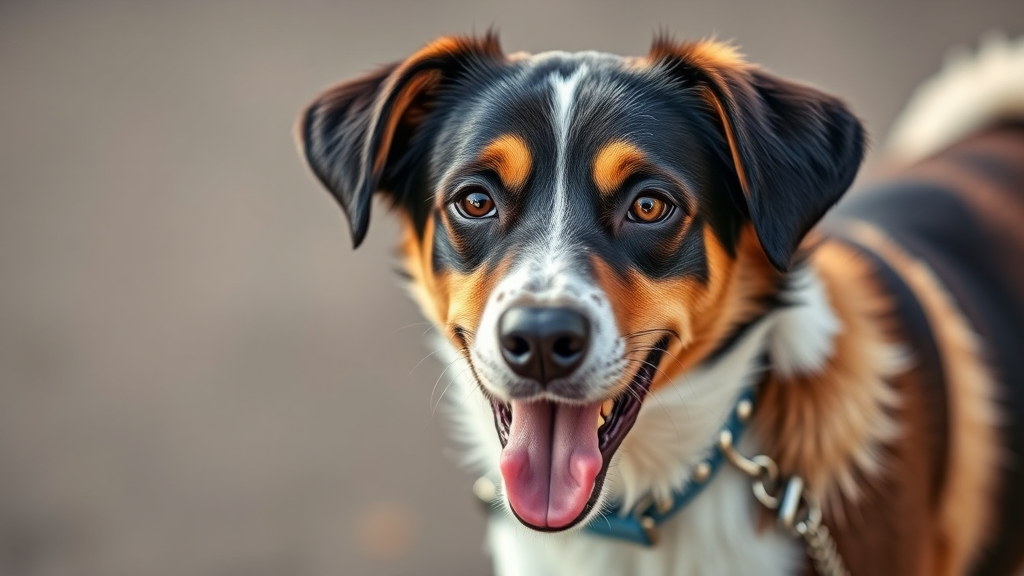
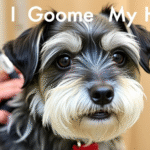
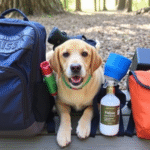
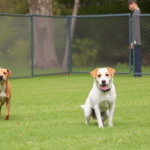
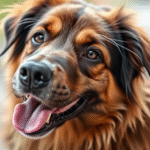

Leave a Reply